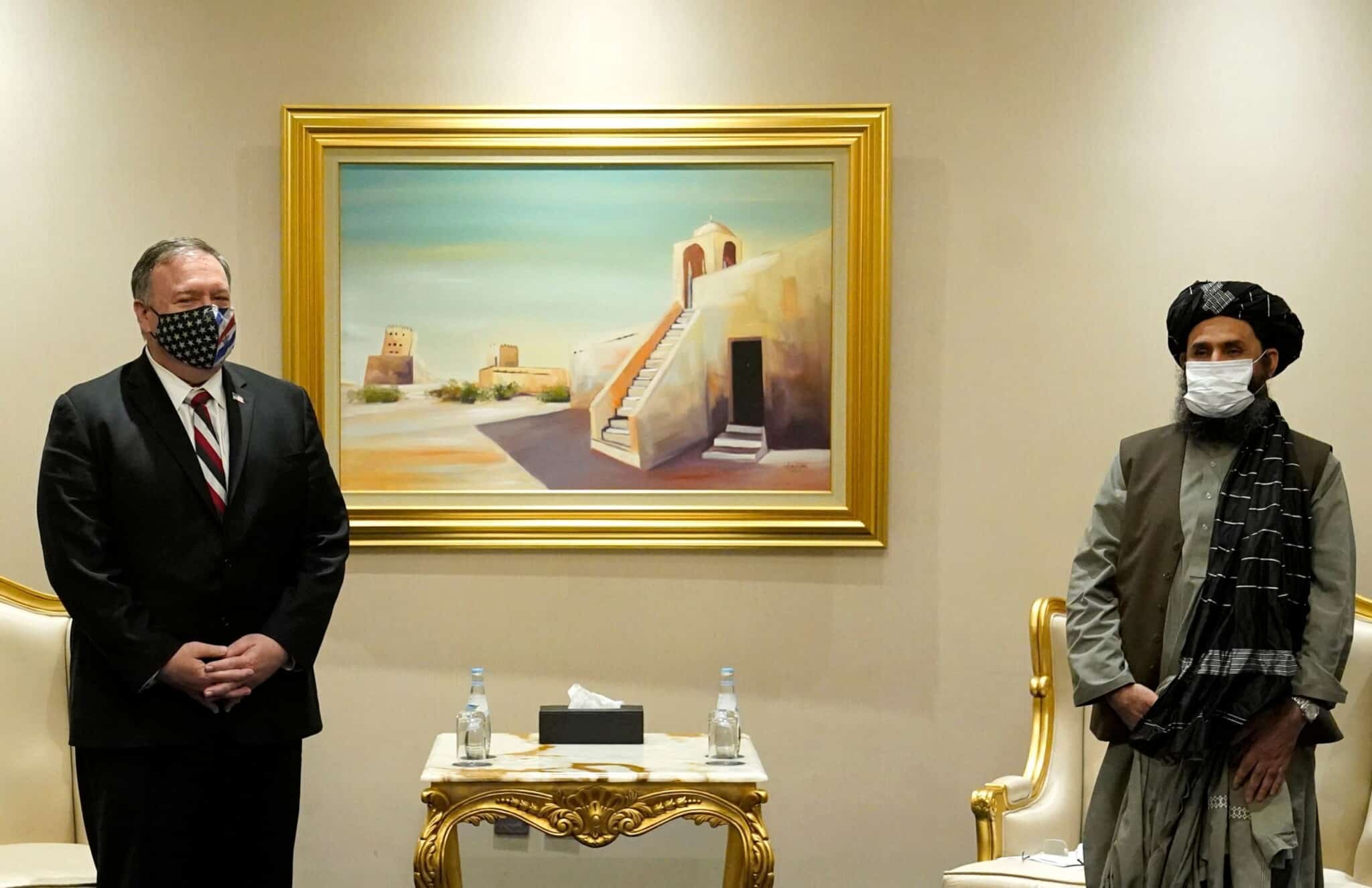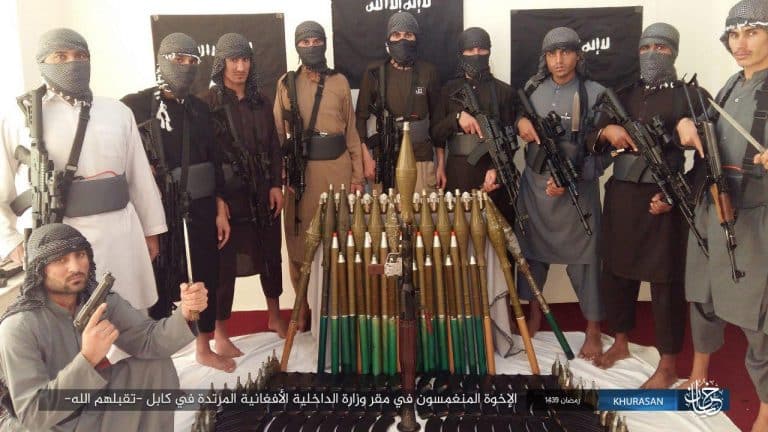January 14, 2021 | From Trump to Biden Monograph
Sunni Jihadism
January 14, 2021 | From Trump to Biden Monograph
Sunni Jihadism
Current Policy
The Trump administration’s approach to combating Sunni jihadism was marked by deep ambivalence. On the one hand, President Trump vowed to destroy the Islamic State’s territorial caliphate. That mission was successful, as the Sunni jihadists now hold little to no ground throughout Iraq and Syria. Since January 2017, the United States also eliminated a number of senior terrorists, including the Islamic State’s overall leader, Abu Bakr al-Baghdadi. On the other hand, the president demonstrated little interest in the other wars waged by Sunni jihadists. His stated goal was to extricate America from its post-9/11 conflicts, whether conditions on the ground merited a withdrawal or not.
Trump’s pledge to end the “endless wars” was a goal at odds with other priorities. Indeed, the Trump administration vowed to prevent the Islamic State from reconstituting its caliphate in Iraq and Syria, but at the same time pledged to withdraw all American forces from both countries.
Trump’s “endless wars” rhetoric was aimed primarily at the war in Afghanistan. On February 29, 2020, the State Department entered into an agreement with the Taliban,1 with the goal of withdrawing all American forces from Afghanistan by April or May of 2021. However, the agreement was an attempt to paper over an American retreat. The Taliban, along with their al-Qaeda allies, remain on the offensive throughout the country and have not demonstrated a desire to lay down their arms or accept the legitimacy of the Afghan government.

Secretary of State Mike Pompeo meets with Taliban co-founder Mullah Abdul Ghani Baradar in Doha, Qatar, on November 21, 2020. (Photo by Patrick Semansky/POOL/AFP via Getty Images)
The Trump administration also began to withdraw counterterrorism forces from Africa. The United States has several thousand military personnel stationed on the continent, where they assist partner forces in hunting senior terrorists and preventing the jihadists from capturing ground.2 This presence is divided between two spheres. In East Africa, the United States bolsters the federal Somali government and the African Union Mission in Somalia in an effort to contain al-Shabaab, al-Qaeda’s branch in East Africa, and hunt members of the Islamic State’s upstart affiliate. In late 2020, the administration announced that American troops would be redeployed from Somalia to neighboring countries. In West Africa, the United States supports France’s ongoing counterterrorism mission, which began in 2013. The French work with local partner forces in West Africa to track down senior al-Qaeda and Islamic State terrorists throughout the region while preventing the groups from capturing territory.
The Trump administration also continued counterterrorism operations in jihadist hotspots such as Yemen and northwestern Syria, where al-Qaeda figures were regularly targeted with precise drone strikes. The United States thwarted a series of plots hatched by al-Qaeda in the Arabian Peninsula (AQAP), which is headquartered in Yemen and has even targeted the United States on multiple occasions. AQAP successfully executed a terrorist attack at Naval Air Station Pensacola in December 2019, killing three American service members and wounding several others.3
Countering terrorist attacks on the homeland was a priority for the Trump administration. By the end of 2019, the FBI was still investigating “more than 2,000 cases tied to” designated foreign terrorist organizations, hundreds of which involved individuals drawn to the Islamic State caliphate’s call.4 The FBI thwarted numerous Islamic State plots, including those directed by virtual planners – jihadists based in Iraq and Syria who provide online guidance to willing recruits.5
Assessment
The cumulative effect of the Trump administration’s policies from 2017 to the end of 2020 was to contain and disrupt the jihadists. Containment meant that not only did the jihadists lose their would-be caliphate in Iraq and Syria; they were also prevented from forming new states in Afghanistan, Somalia, and West Africa.
The administration’s chief success was the dissolution of the Islamic State’s territorial caliphate. Although Trump claims credit for liberating 100 percent of the jihadist state’s territory, the operations in Syria and Iraq were a continuation of his predecessor’s approach. The Islamic State had lost approximately 50 percent of its turf by January 2017.6 The jihadists lost their remaining territory after Trump loosened the U.S. military’s rules of engagement ahead of the battles for Mosul and Raqqa, the caliphate’s would-be capitals.
Trump empowered American allies to fight in the Middle East rather than putting U.S. troops in harm’s way. In Syria, the administration inherited a partnership with the Syrian Democratic Forces (SDF), an army of predominantly Kurdish fighters. In Iraq, the administration continued to work with the Iraqi government as well as Peshmerga fighters in Iraqi Kurdistan. While Iraqis conducted most of the fighting, they were backed by small American military deployments. Together, they liberated the remaining territory held by the Islamic State.
Outside of Iraq and Syria, the administration continued to degrade the Islamic State’s so-called provinces. The United States delivered significant blows to the group’s Khorasan (Afghanistan) province (also known as ISIS-K), killing a string of its top leaders and damaging its network. Still, ISIS-K and other Islamic State affiliates remain a threat, periodically launching attacks.
With respect to al-Qaeda, the administration had fewer successes. The United States continued tracking down high-value al-Qaeda personnel around the globe. On August 7, 2020, at the behest of Washington, Israeli assassins took out al-Qaeda’s deputy emir, Abu Muhammad al-Masri, in Tehran.7 Hamza bin Laden, Osama’s heir, was another prominent terrorist to perish in this campaign. Other noteworthy al-Qaeda figures were eliminated in Afghanistan, Mali, Syria, and Yemen. Trump also authorized an increase in airstrikes in Somalia, where American airpower has stymied al-Shabaab’s attempts to gain ground.
Trump’s Afghanistan policy was wildly inconsistent. Long a skeptic of the war, Trump reluctantly agreed to a modest troop increase in August 2017.8 At the time, he argued that victory in Afghanistan was necessary to protect American interests. Just over one year later, Trump reversed course, launching negotiations with the Taliban in an effort to justify a complete withdrawal. The Taliban reportedly agreed to several counterterrorism assurances, including a promise to prevent al-Qaeda from using Afghan soil to plan international attacks. However, there is no reason to think the Taliban will comply. The agreement contains no verification or enforcement mechanisms; the Taliban have repeatedly lied about their relationship with al-Qaeda; and there is ample evidence that the two remain allies. A complete withdrawal from Afghanistan by the spring of 2021, as the deal stipulates, would cement America’s loss in its longest war, turning over most of the country to al-Qaeda’s closest ally.
There is much uncertainty regarding the future of America’s counterterrorism campaign. Two successive administrations have attempted to extricate U.S. forces from post-9/11 conflicts. However, Presidents Obama and Trump were mugged by a simple reality: The enemy gets a vote. The Islamic State, al-Qaeda, and other jihadist groups will continue to threaten American interests whether the United States remains committed to the fight or not. The “endless wars” rhetoric obscures this reality, portraying America’s presence overseas as the principal problem. It is irresponsible to assert that America can ignore the Sunni jihadist threat.
Recommendations
- Retain a small U.S. military presence in select jihadist hotspots. The days of large-scale counterinsurgency efforts were over well before Trump’s election. The United States ended the Islamic State’s caliphate in Syria with fewer than 2,500 U.S. Special Operations Forces on the ground.9 They backed up more than 60,000 SDF fighters, who sustained the overwhelming majority of the casualties during the heaviest fighting. The U.S. presence in Syria is augmented by several thousand troops in Iraq. Should the United States completely withdraw its forces, the Islamic State will likely enjoy a resurgence, as its members continue to wage guerrilla warfare in both countries.The situation is more complicated in Afghanistan, where America’s allies in the Afghan government have proven incapable. Yet there is little political will in Washington to keep a small contingent of American forces in country. As in Iraq, the United States has not had a large military presence in Afghanistan in nearly a decade. There are currently a few thousand American military personnel in country. Should they be withdrawn by the spring of 2021, it will be a boon for the jihadists not only in Afghanistan but around the globe. America’s defeat will be obvious.

The Islamic State released a photo on May 31, 2018, purportedly showing a 10-person team that assaulted the offices of Afghanistan’s interior ministry in Kabul, Afghanistan, the day prior. (Photo via FDD’s Long War Journal)
- Properly define the enemy. The desire to “end” America’s role in the post-9/11 conflicts has led to politicized assessments of the Sunni jihadist threat. The Obama administration dismissed the Islamic State’s predecessor organization as an insignificant local force incapable of threatening the West. That was proven false after the self-declared caliphate’s rise in 2014. Similarly, too many in Washington have played “disconnect the dots” with respect to al-Qaeda, falsely portraying its regional branches as lesser threats and repeatedly declaring the network’s demise to be at hand.
The U.S. government should create objective metrics for assessing the Sunni jihadist threat. Such metrics would be rooted in rigorous assessments of the Islamic State, al-Qaeda, and allied groups. Declassified versions of these assessments should be released to the public so that citizens can be better informed.
- Expose and sanction state enablers. Neither the Islamic State nor al-Qaeda enjoys state sponsorship the way Hezbollah benefits from the regime in Iran. Nonetheless, both have relied on state enablers, cutting deals with various actors in governments throughout the Middle East and South Asia. Al-Qaeda has long maintained a fundraising network throughout the Gulf States and also reached agreements with officials in Mauritania, Pakistan, and Iran. Turkey has been problematic, often providing a permissive environment for both the Islamic State and al-Qaeda. The U.S. government should continue to expose these networks through public statements and sanctions. Ending these relationships is crucially important if the goal is to diminish the Sunni jihadists’ long-term prospects.
